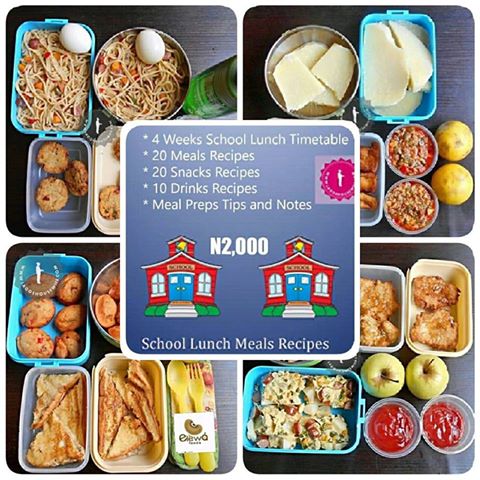Meal plans are a great way to cut down waste, make shopping for food quicker and easier, and help you to stick to healthy choices. But where do you start? What makes a healthy meal plan for the week, and how do you know what to include?
Firstly, there is no healthy meal plan that works for everyone. At different stages of your life, you will need different levels of nutrients, but there are some general principles that you can follow, and then adjust as necessary.
Here’s how to create a healthy meal plan for the week.
For the vast majority of adults, these practical tips should be the backbone of your meal plan:
A range of fruits and vegetables.
- Whole grain carbohydrates (brown rice, brown bread, millet, bulgar wheat, etc)
- Fermented food such as kefir, kimchi, and sauerkraut
- Unsaturated fats such as extra virgin olive oil, rapeseed oil, avocados, and nuts
- Two portions of oily fish such as salmon per week (or nuts and seeds if you don’t eat fish)
- A handful of nuts and seeds a day
- Aim for 30g of fiber a day
- Eat a range of beans and pulses (such as chickpeas, kidney beans, black beans, and lentils)
- Drink approximately 8 glasses of water a day.
Calorie Counting
A calorie is the energy required to raise the temperature of 1g water from 14.5 to 15.5°Celsius. This is calculated in a laboratory, by burning the food. However, the food is not “burnt” in our bodies, and people’s metabolism and energy expenditure vary, so it’s a very rough estimate.
The absorption and, therefore, how much energy is available for you to use, is also affected by how the food is processed. An example of this is sweet corn. If you grind it down into a powder and make a tortilla, you will absorb far more calories than if you eat whole sweet corn kernels. Instead, you will see most of the kernels untouched, in the toilet!
Another concern with calories is that instead of thinking about nutrient quality, it promotes prioritizing quantity. For example, there is a huge difference in the number of nutrients you could consume in 500 calories of fruit and vegetables, versus 500 calories of ice cream.
Also the number of calories you need varies according to so many factors, such as age, gender, lifestyle, and activity level, that it is hard to accurately predict exactly how many you need. Instead, I prefer to recommend a general principle of how to balance your plate and a reminder to eat mindfully when you are physically hungry, not because of an emotional trigger.
How to Balance Your Plate
When thinking of your healthy meal plan, for each meal your plate should contain approximately:
- Fruit and vegetables (1/2 plate)
- Whole grains (1/4 plate)
- Lean protein (1/4 plate)
- A spoon of unsaturated oil
This will help you when you think of each meal to work out what to include and approximate portion sizes.
An Example For A Day
Breakfast
- Overnight oats, with chia seeds and milk or fortified plant based milk
- A piece of fruit
- Snack
- A handful of mixed nuts
Lunch
- Grilled tofu with a mixed salad and bulgar wheat
- A piece of fruit
- Snack
- Apple slices with nut butter
Dinner
- Chicken / tofu / salmon with miso brown rice and spring greens
- OR vegetable curry, daal, and brown rice
- OR stuffed aubergine with mixed vegetables and millet or quinoa
- A piece of fruit
How to Adjust Your Meal Plan
There are certain phases when more or less nutrients are needed, so it is important to consider your changing needs.
When You’re Pregnant
During your pregnancy, you should limit oily fish to once a week, and only 2 tuna steaks or 4 medium sized cans of tuna per week, because of the risk of pollution.
You should also avoid the following food groups:
- Raw or undercooked eggs
- Unpasteurized cheese
- Raw or undercooked meat
- Homemade ice-cream with raw egg
- Soft-serve ice cream from vans or kiosks
- Vitamin A supplements
- Liquorice root
- Alcohol
When You’re Breastfeeding
While you are breastfeeding, your body needs more calcium (1250mg), selenium (70mcg), and iodine (200mcg). Ensure that you include these in your meal plan.
When Going Through Menopause
Menopause changes your long-term risk of disease, so it is important to focus on items that help support bone and heart health. The framework above already sets out a diet to support long term heart health, but for bone health aim for:
- 1200mg calcium per day
- High-quality protein at every meal
- Foods rich in vitamin K
- Foods rich in phosphorus
- Foods rich in magnesium
- Organizing Your Shopping
Once you have completed your healthy meal plan for the week, you can save the ingredients that you regularly need to an online shopping list, in order to make repeat ordering simpler. Some recipe books also now have a QR code so that you can easily synchronize the ingredients needed with your online shopping.
Try to eat seasonal fruit and vegetables where possible, but canned beans, frozen, dried, and freeze dried fruit make great substitutes for fresh, retaining most of the nutrients.
Final Thoughts
Creating a healthy meal plan for the week may be daunting at first, but once you get the hang of it, it’ll become a fun addition to your weekly planning, and one that will ultimately improve your overall lifestyle. Try to use the general feedback above and adapt it to your own specific needs. Enjoy looking for new and exciting recipes to include in your plan!


